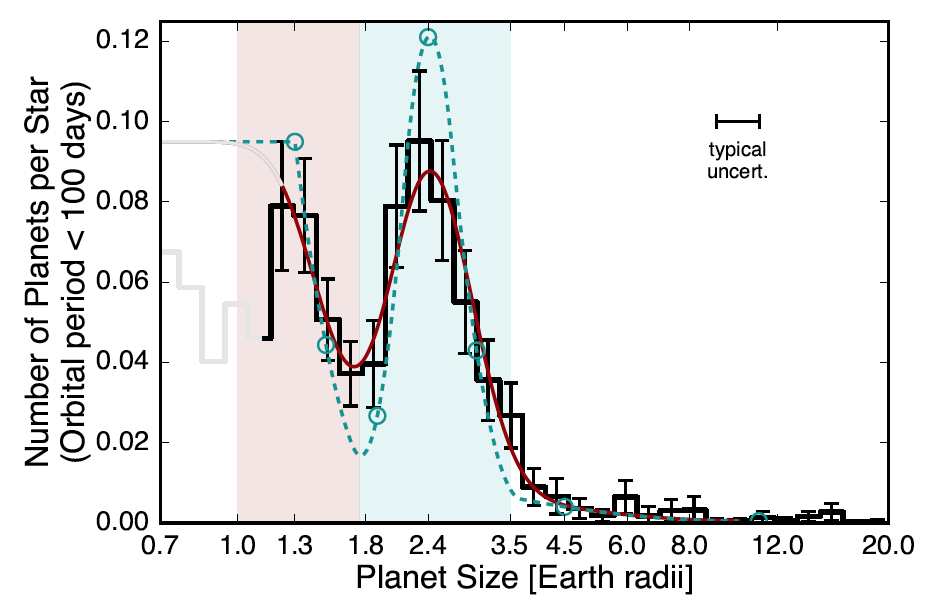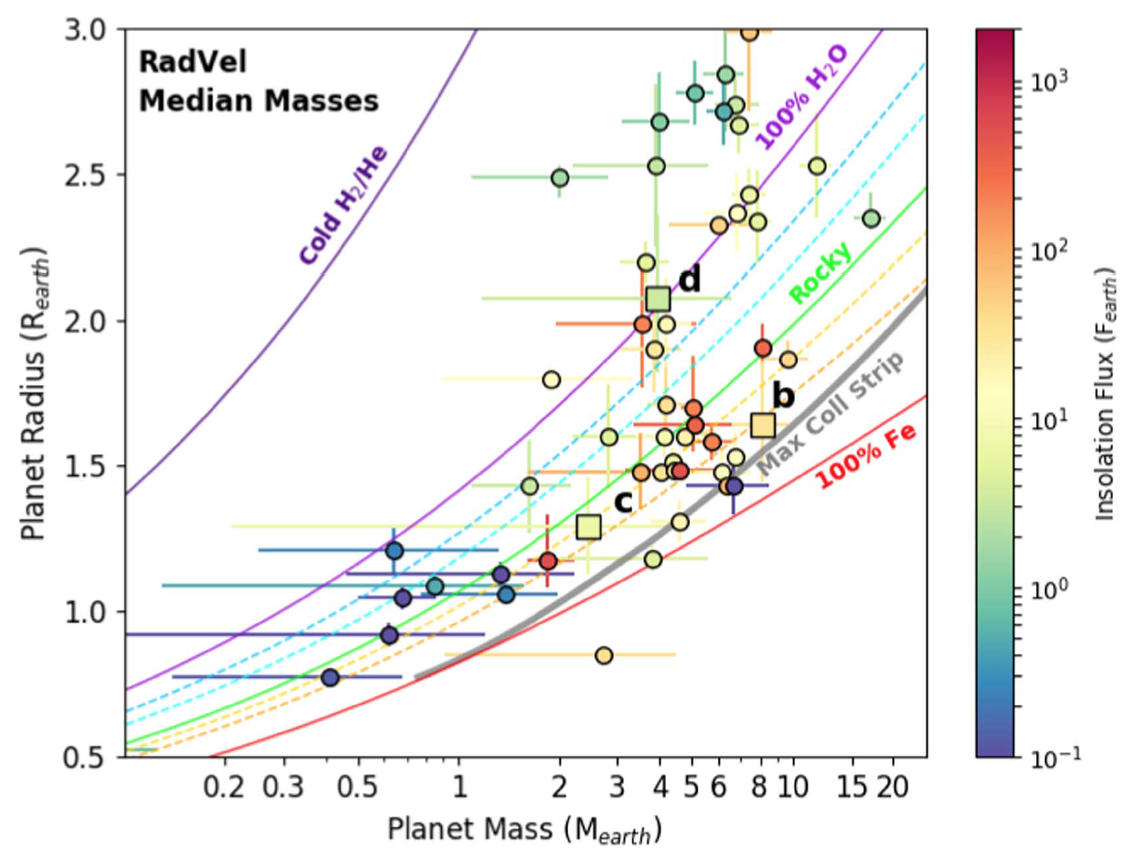Following Up Transiting Exoplanets with Radial Velocity
The Kepler mission showed us that planets with sizes between that of Earth and Neptune appear to be the most common type in our Galaxy. These “super-Earths” continue to be of great interest for exoplanet formation, evolution, and composition studies. However, the number of super-Earths with well-constrained mass and radius measurements remains small (40 planets with the error in mass < 25%), due in part to the faintness of their host stars causing ground-based mass measurements to be challenging. Recently, three transiting super-Earth planets were detected by the K2 mission around the nearby star GJ 9827/HIP 115752, at only 30 pc (~100 light years) away. The radii of the planets span the “radius gap” detected by Fulton et al. (2017), and all orbit within 6.5 days, easing follow-up observations.
From Fulton et al. (2017), completeness-corrected histogram of planet radii for planets with orbital periods shorter than 100 days. The best-fit spline model is over-plotted in the solid dark red line. The region of the histogram plotted in light grey is not included because it suffers from low completeness. Lightly shaded regions encompass our definitions of “super-Earths” (light red) and “sub-Neptunes" (light cyan). The dashed cyan line is a plausible model for the underlying occurrence distribution after removing the smearing caused by uncertainties on the planet radii measurements.
In our recent paper we report radial velocity (RV) observations of GJ 9827, taken between 2010 and 2016 with the Planet Finder Spectrograph on the Magellan II Telescope. We employ two different RV analysis packages, SYSTEMIC and RADVEL, to derive masses and thus densities of the GJ 9827 planets. We also test a Gaussian Process regression analysis, but find the correlated stellar noise is not well constrained by the PFS data, and that the GP tends to over fit the RV semi-amplitudes resulting in a lower semi-amplitude K value. Our RV observations are not able to place strong mass constraints on the two outer planets (c & d) but do indicate that planet b, at 1.64 R_earth and ~8 M_earth, is one of the most massive (and dense) super-Earth planets detected to date.
A comparison of the median masses and errors for each of the GJ 9827 planets (filled squares), asdetermined from the MCMC error estimation RADVEL, versus other small exoplanets (filled circles) with mass and radius uncertainties less than 1.9 M_earth and less than 1 R_earth, respectively, from the NASA Exoplanet Archive. The point color corresponds to the planet’s insolation flux. Over-plotted in colored solid and dashed lines are planet composition estimates from Zeng et al. (2016). From top to bottom, the compositions are 100% Fe (solid red), sizes/masses of planets that result from the maximum collisional mantle stripping (solid grey, extrapolated from Marcus et al. (2010)), 50% Fe (dashed orange), 25% Fe (dashed yellow), MgSiO3 (rocky, solid green), 25% H2O (dashed cyan), 50% H2O (dashed blue), 100% H2O (solid light purple), and cold H2/He (solid dark purple).
This project was especially exciting for me because it shows how data that we have in hand as part of our RV survey with PFS (or that other groups have in hand for other instruments) can be immediately used to constrain the masses of newly detected transiting exoplanets. We did not go observe this star when the planet was announced; we had already been observing it since 2010! I wonder what other stars in our survey are hiding planets that will be detected by the Transiting Exoplanet Survey Satellite? We'll find out in 2018 (especially if my TESS Guest Investigator proposal is accepted)!

